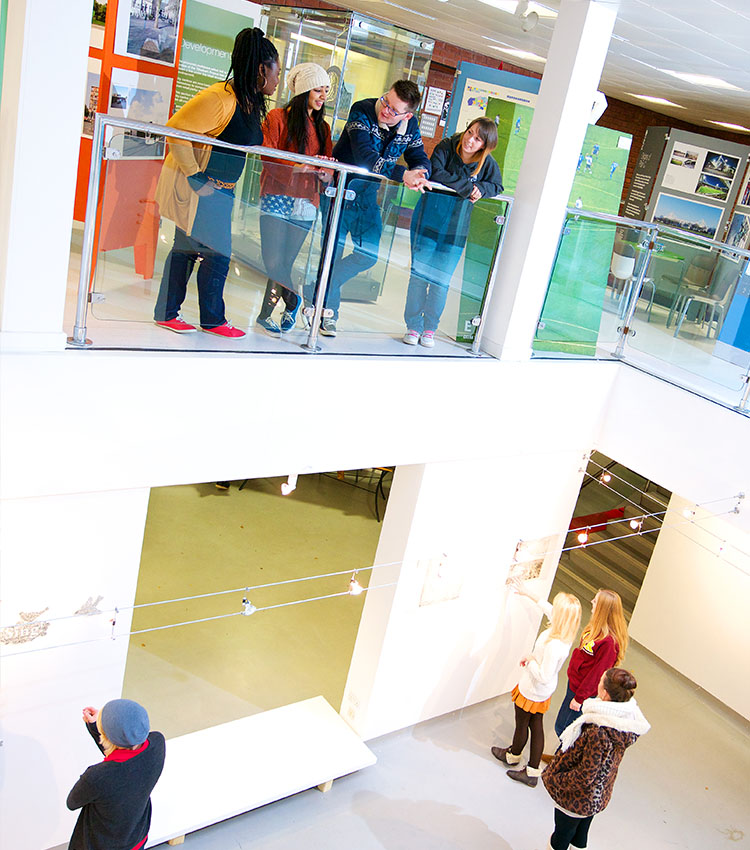The University of Central Lancashire (UCLan) uses Tableau to drive conversation around the classroom
 Michael Brightman is a lecturer in Economics at the University of Central Lancashire (UCLan). Michael is an award-winning general manager with over 20 years business experience. He combines his practical work experiences with economic and management theory to introduce real-life examples into his economics and business curriculum. He teaches on a range of modules on both the undergraduate and postgraduate levels in Economics and Current Issues in Business.
Michael Brightman is a lecturer in Economics at the University of Central Lancashire (UCLan). Michael is an award-winning general manager with over 20 years business experience. He combines his practical work experiences with economic and management theory to introduce real-life examples into his economics and business curriculum. He teaches on a range of modules on both the undergraduate and postgraduate levels in Economics and Current Issues in Business.
Michael is mainly using Tableau in one of his modules, entitled Current Issues in Business, where he teaches the core concepts of Economics and its application in the modern world.
In this interview, Michael Brightman talks about how Tableau helps his students:
- Engage in meaningful conversations about data
- Gain Tableau skills to use in their future careers
- Create visualisations about their personal interests with ease
My first thought about Tableau was that it was easy to use and easy to learn. I could see back then that Tableau would fit perfectly in our courses and most importantly, that the students wouldn’t have any difficulty learning how to use the product.
Interview with Michael Brightman, lecturer in Economics at UCLan
Tableau: How did you first learn about Tableau?
Michael Brightman, Associate Lecturer, University of Central Lancashire: I first became aware of Tableau after a conversation with a journalism colleague six years ago. Back then, I was not actively involved with Tableau, but was more of an observer. I decided to have a serious look at it and taught myself enough to start using it about four years ago, which was when I started using my first visualisation in class. I then started teaching it to my students a year later.
Tableau: Why did you choose to use Tableau in your course?
Michael: I started teaching it after I went to an event in Manchester, which I think was a Tableau Experience day. Some companies were showing aspects of the software and how to learn it and then I took what I have learned from that in terms of teaching in the classroom. My first thought about Tableau was that it was easy to use and easy to learn. I could see back then that Tableau would fit perfectly in our courses and most importantly, that the students wouldn’t have any difficulty learning how to use the product.
Tableau: How do you use Tableau in your courses?
Michael: I’m using Tableau to visualise data and information related to economics and current issues in business. I find that when you use Tableau vizzes, you are able to drive the conversation around the classroom— especially when you have a number of international students.
If, for example, you have datasets that include international information, you can ask students from individual countries to comment on home personal knowledge relating to the country.
This type of interaction is important, especially for students who may be nervous about talking in a second language or who may feel that they are not as knowledgeable on certain subjects—especially when we talk about the UK or the European Union. By allowing them to comment on their own country, that gives them the confidence and also a learning experience for all of us in the classroom.

Learning about Tableau in the course was really useful for me. With Tableau, I was able to demonstrate things in much more detail and it looked more professional too!
Tableau: Besides the interaction with the students, what are the benefits of using Tableau in your courses?
Michael: I would point out three main strengths about Tableau from an instructor’s perspective. The first one is employability. I believe that Tableau is becoming a skill that more and more employers are looking for. The knowledge and the ability of using Tableau even at a basic level is worth mentioning on a CV. Then there’s the interest Tableau generates among students. Some students don’t use Tableau only for their business classes but also for their personal interests. One student created a visualisation around cricket scores for example. The third benefit I see about Tableau is about the awareness it brings. For example for our MBA students, it may well be that their companies or themselves are behind on technology and what is available on the market. What I say to them is “Look, be aware of what these modern software tools can now do. You might not be comfortable using it but someone within your company may have this specialisation and produce the results you see in the classroom.”
Tableau: What were the biggest challenges of teaching Tableau?
Michael: In terms of functionalities, I use probably only a small percentage of them as opposed to what businesses use them for. So, the challenge was to narrow it down to the part that would be useful to the students to use so that they could create their own visualisation quickly.
Tableau: What type of feedback do you receive from your students?
Michael: They are amazed at the functionalities with Tableau and grateful that Tableau has been introduced to them. They didn’t have a realisation of what’s available or what can be done.
For example just two years ago creating a treemap would have needed some experimental software and the students would have had to spend hours to create one. Now it can be done within a click of the mouse with Tableau.
So, it’s the impact regarding the speed and type of visualisation that I think have impressed them the most.
Tableau: Did you notice any major difference in your course since you started using Tableau?
Michael: Yes, in terms of data visualisation for example, the speed with which Tableau has developed and upgraded its functionalities has had an impact on my courses. Each year what I can show to my students is different and innovative and as I mentioned earlier, Tableau has helped to create interaction in my courses.
Tableau: What would you recommend to your colleagues who would like to use Tableau in their class?
Michael: Today’s modern students are extremely computer literate, so what I would suggest is not to be afraid to teach them Tableau. The students only need to be shown the basics of Tableau and those who have an interest will take the rest forward especially given the amount of online tutorials that are available.

The speed with which Tableau has developed and upgraded its functionalities has had an impact on my courses. Each year, what I can show to my students is different and innovative. Tableau has helped to create interaction in my courses.
Tableau: Anything you would like to add?
Michael: Maybe just a few words about how I’ve been using Tableau in my research. My main research interest is the Economics of Built Heritage, and as part of this research I use Minitab, which is similar to SPSS.
I use Minitab to interrogate the data and to do multiple regression analysis. A bit like with Excel, if you want to change your data around, you have a few copy-paste actions to do to get the right format.
I won’t get too much in the details, but what I’ve realised is that Tableau is very useful for research as it speeds up the process of changing the data around, especially if you have got outliers or unusual observation that you want to take out of the visualisation. For example if Minitab says that there are some unusual observation, if you want to take that data out from the visualisation in Minitab it can be a very long process, but with Tableau, you just create a filter, and it’s done.